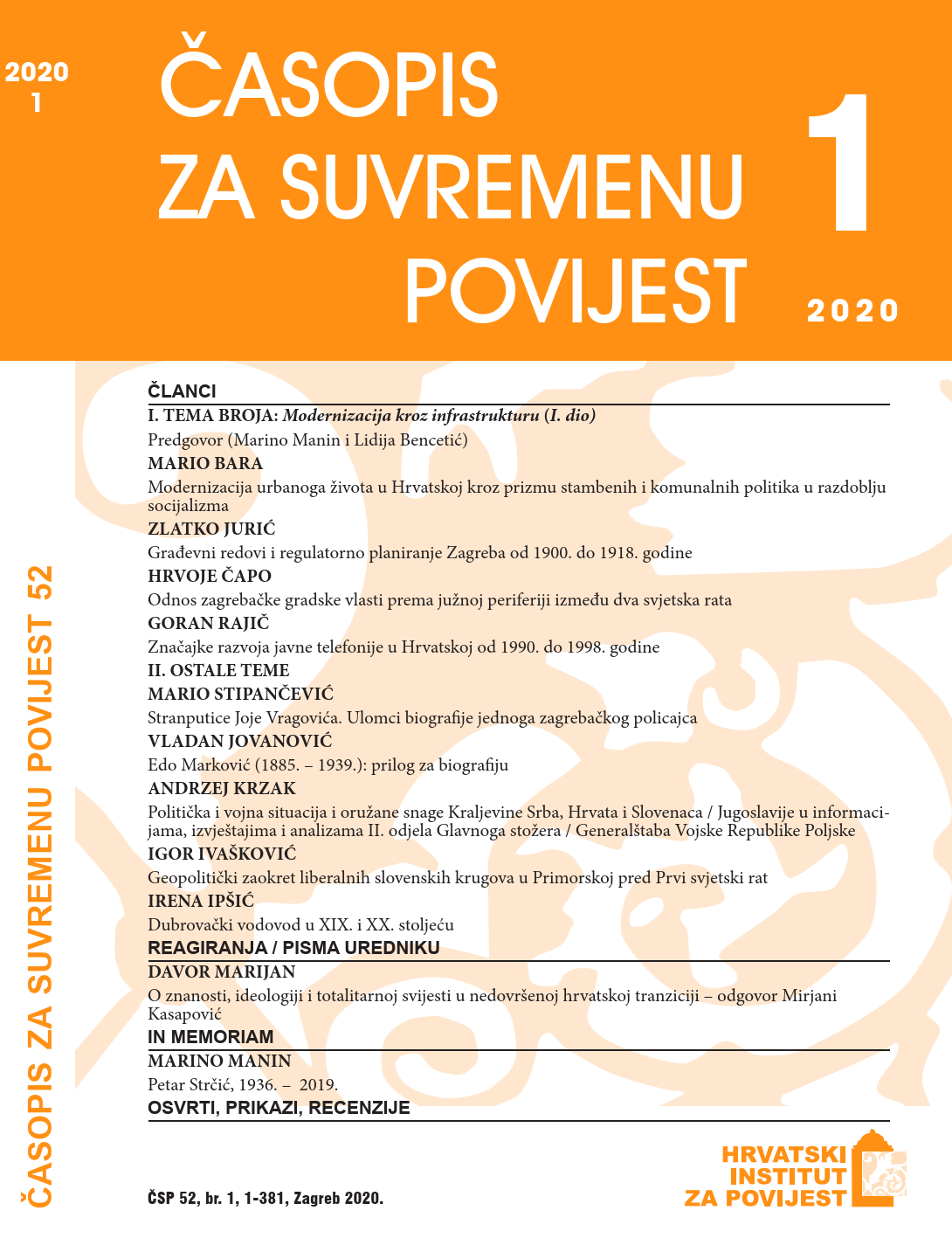Dubrovački vodovod u XIX. i XX. stoljeću
The Waterworks in Dubrovnik in the 19th and 20th Centuries
Author(s): Irena IpšićSubject(s): Economic history, Local History / Microhistory, 19th Century, Pre-WW I & WW I (1900 -1919), Interwar Period (1920 - 1939), WW II and following years (1940 - 1949), Post-War period (1950 - 1989)
Published by: Hrvatski institut za povijest
Keywords: Dubrovnik; waterworks; gravity canal; fountain; 19th and 20th centuries;
Summary/Abstract: Based on existing knowledge, archival documents, old newspaper articles, and documentation from the contemporary city company ‘Vodovod Dubrovnik’ (Dubrovnik Waterworks), this paper follows the development of the Dubrovnik waterworks during the 19th and 20th centuries. The backbone of the new waterworks until the mid-20th century was the gravity flow water distribution system built in the 15th century. This was an important project that signified a turning point in socio-economic progress and left a significant mark on the further development of Dubrovnik. Its communal value is also apparent from the fact that a water canal was built at that time and, with several extensions and modifications, continued to provide water to the city area until the mid-20th century, when construction of the contemporary Dubrovnik water supply system began. Due to financial difficulties, repair work was limited to the most critical issues, while the increasing demand for water was met by smaller-scale reconstructions of the aging water canal and reinforcing the existing gravity flow system. However, with the increase in the urban population in the late 19th century and the introduction of water into certain institutions and private objects, supplying water became increasingly problematic and the necessity of building a new, complete water supply system increasingly apparent. The first attempt to improve the water supply took place in 1897, when a contract was made with the owner of the mills at the spring of the river Ombla, the most abundant source of potable water in this area, to transmit a certain amount of water to the old water canal. However, this solution soon proved inadequate, and the issue of supplying water remained unresolved until 1964, when the project of the contemporary Dubrovnik water supply system was realised and a tunnel through the Srđ hill was built, allowing water from the Ombla river spring to be pumped with electric pumps to newly built reservoirs and objects in the city area. The gravity canal was then almost completely abandoned, leaving only the part from the Šumet spring to Komolac and Sustjepan active (until the 1980s).
Journal: Časopis za suvremenu povijest
- Issue Year: 52/2020
- Issue No: 1
- Page Range: 219-249
- Page Count: 31
- Language: English, Croatian

